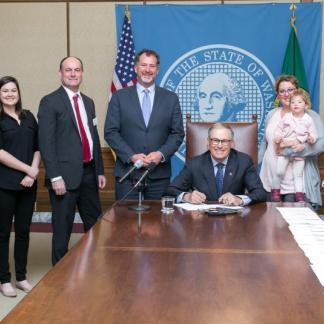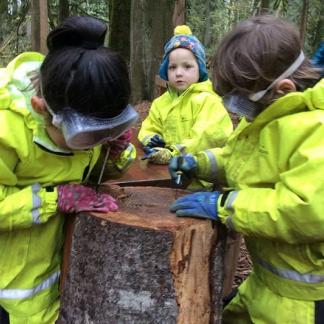Member Spotlight
Washington Outdoor School
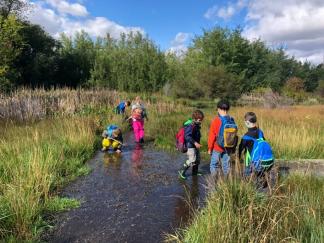
Photo credit: Washington Outdoor School
Washington Outdoor School (WOS), offers a variety of outdoor, nature-based immersion classes in Central Washington, Kittitas County, on the ancestral, traditional and contemporary lands of the people of the Yakama Nation, many of whom continue to steward the land and water ways.
WOS’s mission is to cultivate an attitude of wonder and foster a sense of stewardship through immersion in the natural world. In all classes and as often as possible, the focus is on connections—to each other, to and within the natural world, to the past, present and future. With classes located in both the upper and lower county, children experience a diverse ecological landscape, from ponderosa pine and douglas fir forests to arid, shrub steppe ecosystems.
Students are fortunate to enjoy extended periods of time, multiple days per week, exploring public forest land, city parks and privately owned land where they get to know the plant and animal neighbors living in these places. Across all of their “in-house” programs, WOS serves 130 families with children birth-age 13 every year, in addition to school district partnerships.
We chatted with Sibyl Maer-Fillo, who founded Washington Outdoor School and currently oversees and runs all WOS programs, trains and manages staff, and teaches in the After-School program, along with serving on the Advisory Board for the Washington Nature Preschool Association (WaNPA).
From launching the pilot program in 2013 to where the program is now, what are some lessons you've learned that might benefit other nature-based programs?
In the Spring of 2010, I read a frontpage article in the Seattle Times spotlighting Cedarsong Nature School that planted a seed in my heart. Cedarsong’s founder, A quote from Erin Kenny, “Children cannot bounce off the walls if you take away the walls,” leapt off the page and resonated with me deeply. As a classroom teacher, I felt constrained by indoor settings and traditional education, so I ALWAYS sought to get my students outside no matter where or who I was teaching. Erin’s words freed my mind and opened up the world of education in a way I needed to visualize. Over time, that seed germinated and led me to create my own version of a “wall-less” program in the Washington woods.
In 2013, I started with a group of families with young children (mostly my friends or acquaintances and their children) willing to try out my idea. Our experiences over the course of a few winter months convinced me the idea could work in our community. In the fall of 2014, we started REALLY small, offering classes for preschool age children, 3 hours a day, Tuesday through Thursday, with the help of friends and volunteers. Some of our early classes had as few as two children, but we kept it going and over time, our classes grew. New branches sprouted to meet new needs and opportunities—our preschoolers got older so we began offering after school explorations and parents with younger children pushed us to create 0-4 with caregiver classes. We realized the best way to get more students outside meant connecting with school districts, which eventually led to the No Child Left Inside grant project and after school program that we run today.
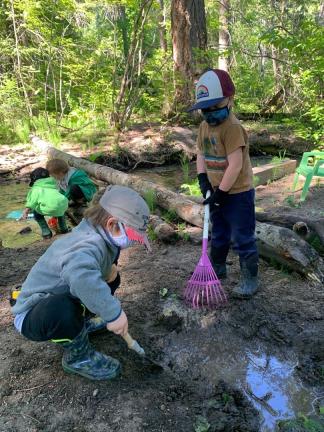
I’d say my biggest lessons (and I am still learning them every day) are: you can’t rush anything, bend and flow with every new development, and keep your purpose for offering an outdoor nature-based program in the forefront of your mind at all times. It’s very easy to get wrapped up in challenges–money worries, staffing issues, administrative acrobatics, misinformation, miscommunication, and misunderstandings–it’s all part of running a program. What gets me through and keeps me engaged is knowing that we are doing sacred work. We have the incredibly special, important job of helping kids make deep, meaningful connections to the natural world and, in the process, we are finding they are gaining lifelong skills of endurance, resilience, compassion, and the ability to manage discomfort.
WOS has multiple locations. What was the process for choosing and opening new locations?
We operate classes in three locations in Upper County and one to two locations depending on access (flooding is common in the spring) in Lower County. Our program has constantly been evolving to meet the needs of interested families. In fact, our first program in Roslyn was barely off the ground when another environmental organization asked if anyone would want to offer a program near Ellensburg and I said, “Sure!” As more people got to know about us, new opportunities opened up.
For each location, we consider how children are engaging with the space, safety, and accessibility for children, teachers, and families. Our needs vary seasonally: in summer, we love to have access to water while in winter we prefer access to hills for climbing and sledding and forested areas for quiet, protected places out of the wind.
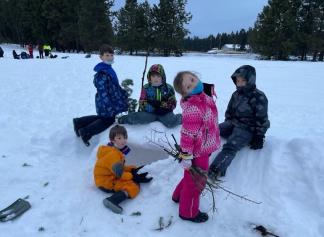
You mentioned partnering with the local school district. How did that relationship begin? Any advice for programs that want to work more with their local districts?
I have been trying to work with our local school district since before I started WOS. When my daughter started kindergarten, I spoke with the principal about allowing children to play in the forest during recess. Concerns about safety and supervision ultimately stopped that from happening and the forest at that school remains coned off during recess. That conversation, like the quote from Erin Kenny, stuck with me. I vowed to figure out how to get the kids at the school district into the forest to explore and prove that it could be safe. It took over 12 years but we are there now!
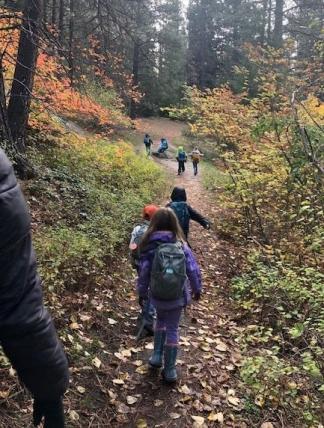
We have grant funding to pay our teachers to work in the public schools, meaning we are offering this program to the district at no cost, which was a huge selling point when we first proposed it. By then, we had the expertise and capacity to run this type of program safely and successfully in an all outdoor setting.
My advice for working with a school district is to look for openings because, in my experience, they are there. For example, we used the COVID-19 pandemic as an opportunity to expand our after school programming. Talk to teachers, parents, district personnel, and community members involved with the schools. People are much more interested in and open to taking student learning outside than ever before. It’s a matter of helping people take that first step out the doors of the school. Doing the work together makes it possible.
Learn more about Washington Outdoor School at https://www.waoutdoorschool.org/


